Zahraa Al Sahili
FairJudge: MLLM Judging for Social Attributes and Prompt Image Alignment
Oct 26, 2025Abstract:Text-to-image (T2I) systems lack simple, reproducible ways to evaluate how well images match prompts and how models treat social attributes. Common proxies -- face classifiers and contrastive similarity -- reward surface cues, lack calibrated abstention, and miss attributes only weakly visible (for example, religion, culture, disability). We present FairJudge, a lightweight protocol that treats instruction-following multimodal LLMs as fair judges. It scores alignment with an explanation-oriented rubric mapped to [-1, 1]; constrains judgments to a closed label set; requires evidence grounded in the visible content; and mandates abstention when cues are insufficient. Unlike CLIP-only pipelines, FairJudge yields accountable, evidence-aware decisions; unlike mitigation that alters generators, it targets evaluation fairness. We evaluate gender, race, and age on FairFace, PaTA, and FairCoT; extend to religion, culture, and disability; and assess profession correctness and alignment on IdenProf, FairCoT-Professions, and our new DIVERSIFY-Professions. We also release DIVERSIFY, a 469-image corpus of diverse, non-iconic scenes. Across datasets, judge models outperform contrastive and face-centric baselines on demographic prediction and improve mean alignment while maintaining high profession accuracy, enabling more reliable, reproducible fairness audits.
Breaking Language Barriers or Reinforcing Bias? A Study of Gender and Racial Disparities in Multilingual Contrastive Vision Language Models
May 20, 2025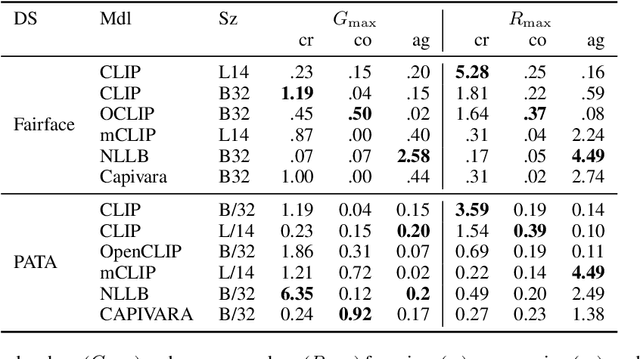
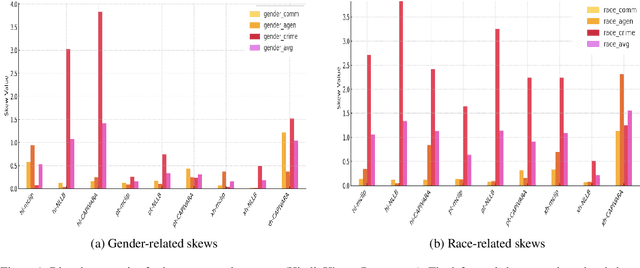
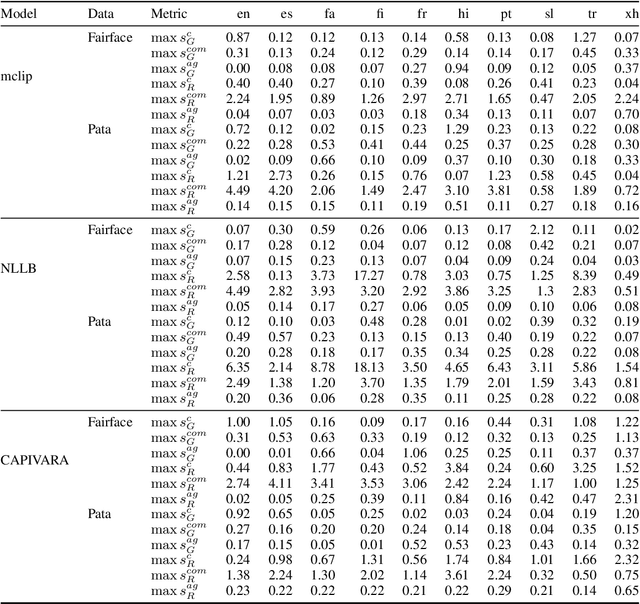
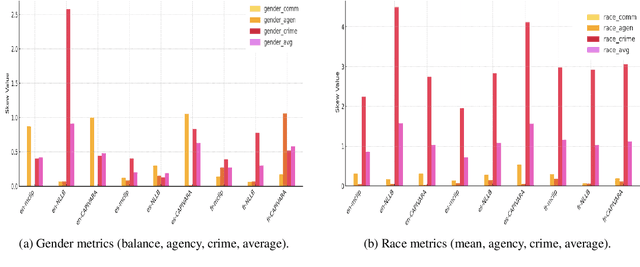
Abstract:Multilingual vision-language models promise universal image-text retrieval, yet their social biases remain under-explored. We present the first systematic audit of three public multilingual CLIP checkpoints -- M-CLIP, NLLB-CLIP, and CAPIVARA-CLIP -- across ten languages that vary in resource availability and grammatical gender. Using balanced subsets of \textsc{FairFace} and the \textsc{PATA} stereotype suite in a zero-shot setting, we quantify race and gender bias and measure stereotype amplification. Contrary to the assumption that multilinguality mitigates bias, every model exhibits stronger gender bias than its English-only baseline. CAPIVARA-CLIP shows its largest biases precisely in the low-resource languages it targets, while the shared cross-lingual encoder of NLLB-CLIP transports English gender stereotypes into gender-neutral languages; loosely coupled encoders largely avoid this transfer. Highly gendered languages consistently magnify all measured bias types, but even gender-neutral languages remain vulnerable when cross-lingual weight sharing imports foreign stereotypes. Aggregated metrics conceal language-specific ``hot spots,'' underscoring the need for fine-grained, language-aware bias evaluation in future multilingual vision-language research.
Towards deployment-centric multimodal AI beyond vision and language
Apr 04, 2025Abstract:Multimodal artificial intelligence (AI) integrates diverse types of data via machine learning to improve understanding, prediction, and decision-making across disciplines such as healthcare, science, and engineering. However, most multimodal AI advances focus on models for vision and language data, while their deployability remains a key challenge. We advocate a deployment-centric workflow that incorporates deployment constraints early to reduce the likelihood of undeployable solutions, complementing data-centric and model-centric approaches. We also emphasise deeper integration across multiple levels of multimodality and multidisciplinary collaboration to significantly broaden the research scope beyond vision and language. To facilitate this approach, we identify common multimodal-AI-specific challenges shared across disciplines and examine three real-world use cases: pandemic response, self-driving car design, and climate change adaptation, drawing expertise from healthcare, social science, engineering, science, sustainability, and finance. By fostering multidisciplinary dialogue and open research practices, our community can accelerate deployment-centric development for broad societal impact.
Multimodal Machine Learning in Mental Health: A Survey of Data, Algorithms, and Challenges
Jul 23, 2024Abstract:The application of machine learning (ML) in detecting, diagnosing, and treating mental health disorders is garnering increasing attention. Traditionally, research has focused on single modalities, such as text from clinical notes, audio from speech samples, or video of interaction patterns. Recently, multimodal ML, which combines information from multiple modalities, has demonstrated significant promise in offering novel insights into human behavior patterns and recognizing mental health symptoms and risk factors. Despite its potential, multimodal ML in mental health remains an emerging field, facing several complex challenges before practical applications can be effectively developed. This survey provides a comprehensive overview of the data availability and current state-of-the-art multimodal ML applications for mental health. It discusses key challenges that must be addressed to advance the field. The insights from this survey aim to deepen the understanding of the potential and limitations of multimodal ML in mental health, guiding future research and development in this evolving domain.
EquiPrompt: Debiasing Diffusion Models via Iterative Bootstrapping in Chain of Thoughts
Jun 13, 2024Abstract:In the domain of text-to-image generative models, the inadvertent propagation of biases inherent in training datasets poses significant ethical challenges, particularly in the generation of socially sensitive content. This paper introduces EquiPrompt, a novel method employing Chain of Thought (CoT) reasoning to reduce biases in text-to-image generative models. EquiPrompt uses iterative bootstrapping and bias-aware exemplar selection to balance creativity and ethical responsibility. It integrates iterative reasoning refinement with controlled evaluation techniques, addressing zero-shot CoT issues in sensitive contexts. Experiments on several generation tasks show EquiPrompt effectively lowers bias while maintaining generative quality, advancing ethical AI and socially responsible creative processes.Code will be publically available.
Spatio-Temporal Graph Neural Networks: A Survey
Jan 25, 2023Abstract:Graph Neural Networks have gained huge interest in the past few years. These powerful algorithms expanded deep learning models to non-Euclidean space and were able to achieve state of art performance in various applications including recommender systems and social networks. However, this performance is based on static graph structures assumption which limits the Graph Neural Networks performance when the data varies with time. Temporal Graph Neural Networks are extension of Graph Neural Networks that takes the time factor into account. Recently, various Temporal Graph Neural Network algorithms were proposed and achieved superior performance compared to other deep learning algorithms in several time dependent applications. This survey discusses interesting topics related to Spatio temporal Graph Neural Networks, including algorithms, application, and open challenges.
The Power of Transfer Learning in Agricultural Applications: AgriNet
Jul 17, 2022
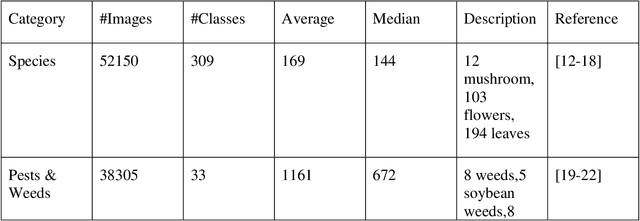

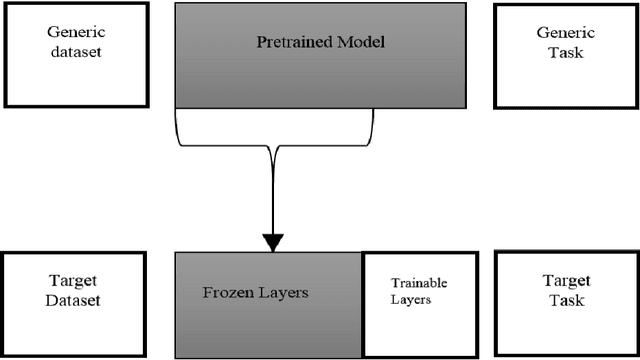
Abstract:Advances in deep learning and transfer learning have paved the way for various automation classification tasks in agriculture, including plant diseases, pests, weeds, and plant species detection. However, agriculture automation still faces various challenges, such as the limited size of datasets and the absence of plant-domain-specific pretrained models. Domain specific pretrained models have shown state of art performance in various computer vision tasks including face recognition and medical imaging diagnosis. In this paper, we propose AgriNet dataset, a collection of 160k agricultural images from more than 19 geographical locations, several images captioning devices, and more than 423 classes of plant species and diseases. We also introduce AgriNet models, a set of pretrained models on five ImageNet architectures: VGG16, VGG19, Inception-v3, InceptionResNet-v2, and Xception. AgriNet-VGG19 achieved the highest classification accuracy of 94 % and the highest F1-score of 92%. Additionally, all proposed models were found to accurately classify the 423 classes of plant species, diseases, pests, and weeds with a minimum accuracy of 87% for the Inception-v3 model.Finally, experiments to evaluate of superiority of AgriNet models compared to ImageNet models were conducted on two external datasets: pest and plant diseases dataset from Bangladesh and a plant diseases dataset from Kashmir.
 Add to Chrome
Add to Chrome Add to Firefox
Add to Firefox Add to Edge
Add to Edge